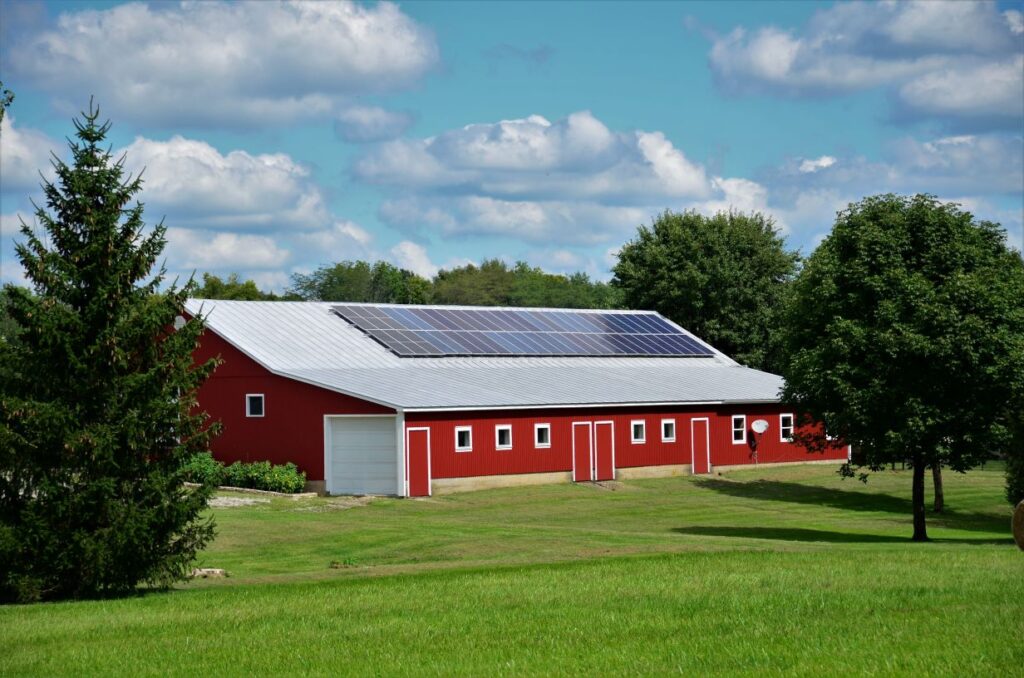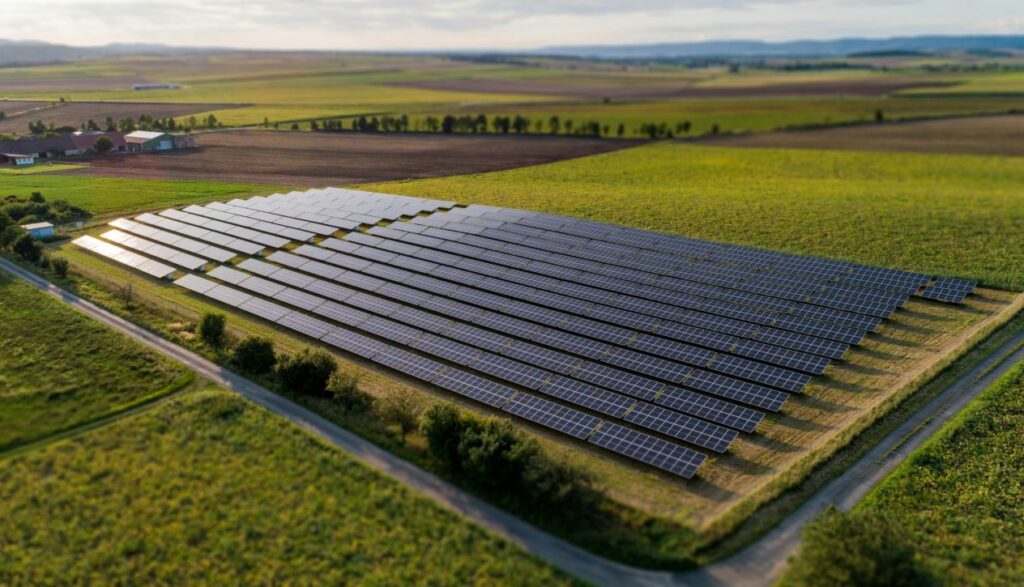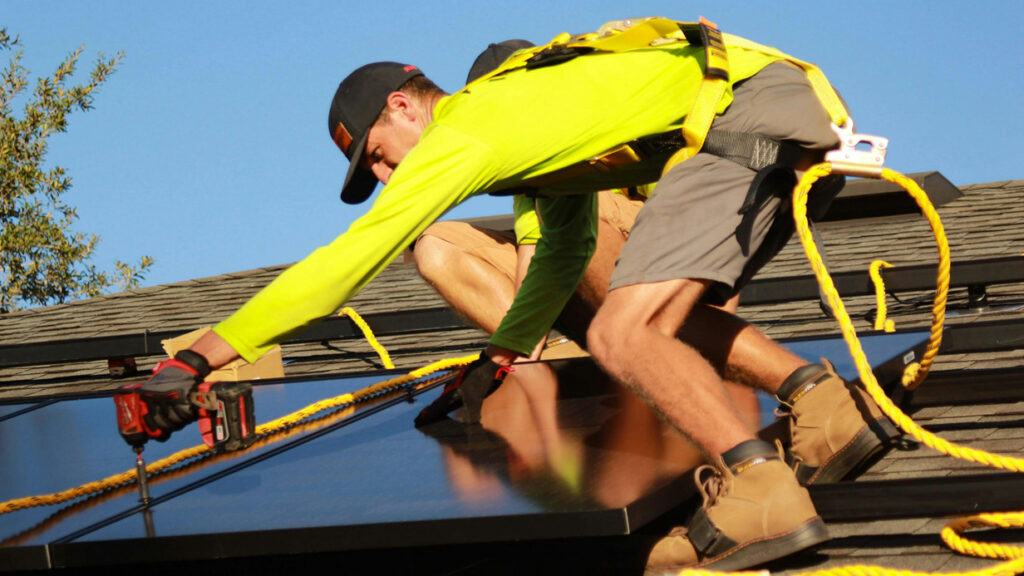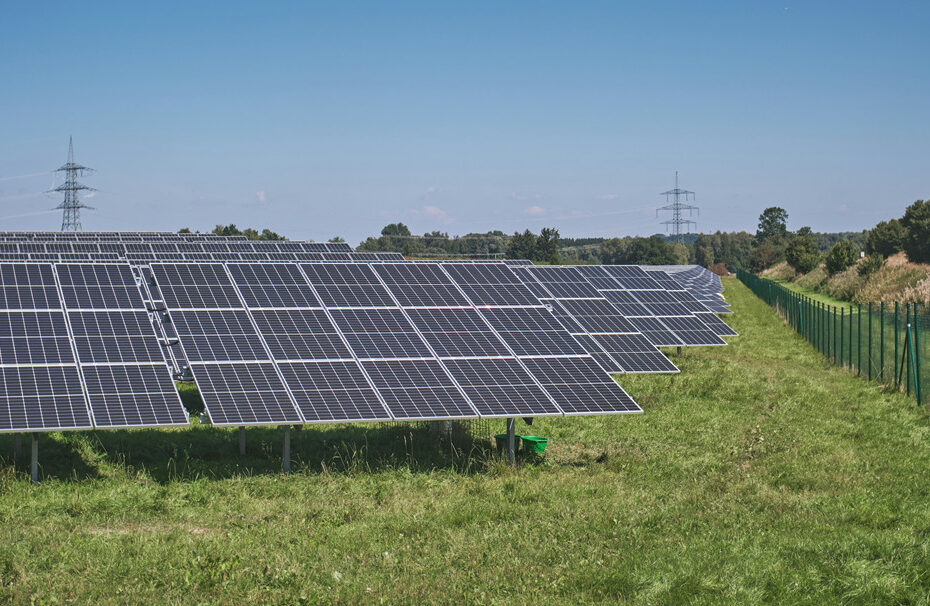Farmers have a great opportunity to invest in renewable solar energy that reduces greenhouse gas emissions and their reliance on fossil fuels. Farms are driven to implement energy efficiency for various reasons, including cost savings, production increases, maintenance cost reduction, improved performance, and a desire for environmental stewardship. All of these factors can influence their decision to implement energy efficiency. Farms have the resources to offset their energy needs while generating additional revenue for the farm.
Solar Income for Farms
Providing power to third-party renewable energy developers allows farmers to develop a new income stream from their existing operations, especially for solar. Typically, solar energy is bought and sold over long-term contracts with stable pricing. These types of payments can provide a financial hedge against the volatile nature of farming. Solar provides a great financial attraction to farms due to the dramatic decrease in solar costs over the past decade coupled with more favorable tax treatment including tax credits and depreciation. Other available federal, state, and local incentives can provide further reductions in up-front costs. There are also Renewable Energy Credits (RECs) that can provide additional revenue over time.
Installing Solar Panels on Farms
There are a variety of ways to install solar panels on a farm. There are usually several buildings, including the house as well as the barn and other large agricultural structures that can support solar. These buildings would support what’s known as a ‘roof mount’. In addition, there are large areas of land that can support a great number of panels. These are supported on a metal framework or posts on the ground and are known as a ‘ground mount’. There are pros and cons to each, including looking at costs, performance, maintenance, and permit requirements. The Pennsylvania PUC can provide more information.

Roof Mount Solar Panels
When using a roof mount on houses or other structures, there are a few things to consider. The condition of the roof itself is very important. Sometimes it is necessary to fix or even replace the roof before solar panels are being installed because these projects are complementary. Roofs should ideally be south-facing to capture sunlight and have a proper slope to track the sunlight. They should also be relatively free from shade caused by other nearby objects like trees or other taller structures. Roofs can be evaluated for sunlight by using tools like Google’s Project SunRoof.
Ground Mount Solar Panels
Ground mount systems use the available land area in and around the farm to develop larger-scale solar arrays. Ideally, solar panels are being mounted on cleared, unused acreage or marginal land. These panels are set on a fixed angle or have a tracking system that tilts and moves them to capture the optimal amount of sunlight. Since panels are modular, they can be combined into a large solar array that produces more than enough electricity to meet a farm’s needs as well as send excess energy back into the grid. This excess energy is an additional source of revenue for the farm. Farms in Pennsylvania are experimenting with new techniques for agrivoltaics, using the same land for both agriculture and solar panels. These efforts are increasing – using pollinator plants around solar panels can boost crop yields and prevent soil erosion or grazing sheep underneath them.
Large-Scale Solar Land Leases

Many farmers and rural landowners are being approached by solar developers looking to lease land for grid-scale solar facilities. These larger-scale solar facilities feed into the electrical grid to supply a utility company with power for its customer base. These large-scale solar projects, which consist of community solar and investor-owned solar systems on farms, are increasing across the United States. They can use approximately 6 to 7 acres of land for every megawatt (MW) of solar installed, so a 5 MW project could require 30 – 35 acres of land.
Leases can provide extra income to farmers and landowners by turning unused or underused land into revenue-generating opportunities. However, entering into such a lease agreement is a significant decision. They should understand the fundamental terms of the agreement, how the lease will affect their property, and ask all of the proper detailed questions of potential developers. In addition, farmers and landowners should consult legal and tax counsel before entering into any such agreement. The Solar Energy Industry Association (SEIA) has a Guide to Land Leases for Solar that walks through the steps of both the solar lease and development processes, as well as provides a list of questions to ask a solar developer. Additionally, the Pennsylvania Department of Environmental Protection (DEP) provides a good resource for landowners interested in learning more about leasing land for grid-scale solar.
Getting Your Solar Project Started
Energy Audit
The best first step for starting an energy project is to get available technical assistance to help uncover hidden potential energy savings, which can be done while maintaining and even improving a farm’s existing operations. A farmer can use one of several options for assistance, including a professional analysis of your utility bills, a walk-through energy assessment, and an in-depth energy audit of the entire farm. Each option is different in its level of commitment, degree of detail, and cost. A utility bill analysis would typically look at 12 months to ensure all the taxes and fees are correct, along with fluctuations and season changes. A walk-through assessment takes a few hours and focuses on equipment and processes, which leads to a report on improvements for energy efficiency, anticipated upfront costs, and estimated return on investment to help prioritize what should be done first. They can also examine the feasibility of installing renewable energy technologies like rooftop solar panels. An in-depth energy auditor will examine, over a few days, overall energy use on the entire farm. This allows them to pinpoint where energy is being lost and how to fix any problems. There are more specific details of these three methods, along with a list of state providers in Pennsylvania in the DEP’s pamphlet on “Finding Hidden Opportunities for Energy Savings”.
Finding A Solar Contractor

A professional solar contractor will be a great help for farmers looking into solar for energy savings. They will help estimate the size of the solar energy system, potential location(s), cost, and permitting requirements. They also will be able to do all do the site preparation, surveying, and installation of any racking systems, ground mount systems, solar panels, and other electrical equipment, such as an inverter and smart meter, or if required, and backup battery storage unit. When making a complex decision to evaluate multiple solar installation companies, farmers can make the comparison process much easier by getting multiple bids for review. See one of our prior blog posts for more information on ‘finding the best solar installer’.
Funding For Solar Projects
While solar panels have fallen in price over time, a solar array project can still be a significant investment for a farm. There are several available options at the state and federal levels, but additional work will be necessary since programs and funding may be subject to change over time. It’s always good to check official websites for programs and contact information. For a detailed guide for farming and energy use projects from the Pennsylvania DEP, see their ‘Funding for Your Energy Projects’ pamphlet.
REAP Program

The Federal Government offers several incentives for energy efficiency through the U.S. Department of Agriculture that are specifically tailored to renewable energy for farms. One of those programs is known as the Rural Energy for America Program or REAP. The REAP program offers competitive grants and loan guarantees for energy efficiency and renewable energy projects. While non-agricultural rural businesses are also eligible to apply, the Pennsylvania program administrator states that almost half of the annual applicants are farms. In the state of Pennsylvania specifically, the amount of current investment in REAP projects is $11,121,473. These REAP grants and loans to make solar more affordable for farms. For more information on the REAP program details, see one of our prior blog posts for more information on ‘How Your Rural Business Can REAP the Rewards of Solar Energy’.
Federal Investments In Clean Energy
There was a recent news item distributed by Daniel Blottenberger at the Pennsylvania USDA about clean energy projects for farms. It is stated below:
“USDA Rural Development Invests $5.2 Million in Clean Energy Projects to Strengthen American Farms and Businesses in Pennsylvania
Release Date: Jan 22, 2024
U.S. Department of Agriculture (USDA) State Director for Rural Development Bob Morgan today announced that USDA is investing more than $5.2 million in renewable energy projects to lower energy bills, generate new income, create jobs, and strengthen competition for Pennsylvania farmers and agricultural producers. Many of the projects are being funded by President Biden’s Inflation Reduction Act, the nation’s largest-ever investment in combatting the climate crisis.
“The Biden Administration and USDA are ensuring farmers and small businesses are not only a part of the clean energy economy, but directly benefiting from it,” Morgan said. “We have seen a great impact from this Administration’s focus on clean energy projects here in Pennsylvania. We expect this effort to continue in 2024.”
In 2023, Rural Development awarded $22.4 million in grant funds through its Rural Energy for America programs. Today’s announcement is the first of 2024 and includes 34 projects in 12 counties throughout Pennsylvania totaling $5,208,487.”
